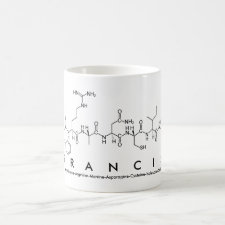
Authors: Pietrzyk A, Suriyanarayanan S, Kutner W, Chitta R, Zandler ME, D'Souza F
Article Title: Molecularly imprinted polymer (MIP) based piezoelectric microgravimetry chemosensor for selective determination of adenine.
Publication date: 2010
Journal: Biosensors and Bioelectronics
Volume: 25
Issue: (11)
Page numbers: 2522-2529.
DOI: 10.1016/j.bios.2010.04.015
Alternative URL: http://www.sciencedirect.com/science/article/B6TFC-4YWYYRN-2/2/6d262b4d4f86911b763f2127a52d2cc3
Abstract: An adenine-templated molecularly imprinted polymer (MIP) film, deposited on a poly(bithiophene) barrier film, served as the recognition element of a piezomicrogravimetric (acoustic) chemosensor. A 10áMHz AT-cut shear-thickness-mode bulk-acoustic-wave quartz crystal resonator with Pt film electrodes was used as the signal transducer. Adenine electrooxidation was prevented by the barrier film. The MIP film was deposited by electrochemical co-polymerization of two functional monomers of bis(bithiophene) derivatives, bearing either the 18-crown-6 or dioxaborinane substituent, in the presence of the adenine template. A strong base solution was then used to extract the template. Completeness of the template removal was substantiated by the UV-vis, XPS, DPV, and EIS measurements. The chemosensor performance was evaluated with the piezoelectric microgravimetry detection at QCM under FIA conditions using a carrier acetonitrile-water (1:1, v:v) mixed solvent solution. The linear dynamic concentration range extended from at least 0.1 to 1mM for the 35 μL/min flow rate, and 100 μL volume of the injected adenine solution. The chemosensor selectivity allowed for discrimination of the adenine analyte from structurally and functionally related interferants, such as 2-aminopurine, guanine, and ascorbic acid. The determined from the FIA kinetic studies stability constant of the MIP-adenine complex, (18 ± 2.4) x 10 4 M-1, was much higher than that of the MIP-(2-aminopurine), (650 ± 90) M-1, MIP-guanine, (122 ± 11) M-1, and MIP-(ascorbic acid), (92 ± 10) M-1, complexes. The concentration limit of detection was as low as 5 nM adenine for the 35 μL/min flow rate, and 1 mL volume of the injected sample solution
Template and target information: adenine
Author keywords: Molecularly imprinted polymers, Adenine piezoelectric chemosensor, Adenine acoustic chemosensor, Bis(bithiophene) electropolymerization, Barrier layer, Poly(bithiophene)



Join the Society for Molecular Imprinting

New items RSS feed
Sign-up for e-mail updates:
Choose between receiving an occasional newsletter or more frequent e-mail alerts.
Click here to go to the sign-up page.
Is your name elemental or peptidic? Enter your name and find out by clicking either of the buttons below!
Other products you may like:
 MIPdatabase
MIPdatabase









